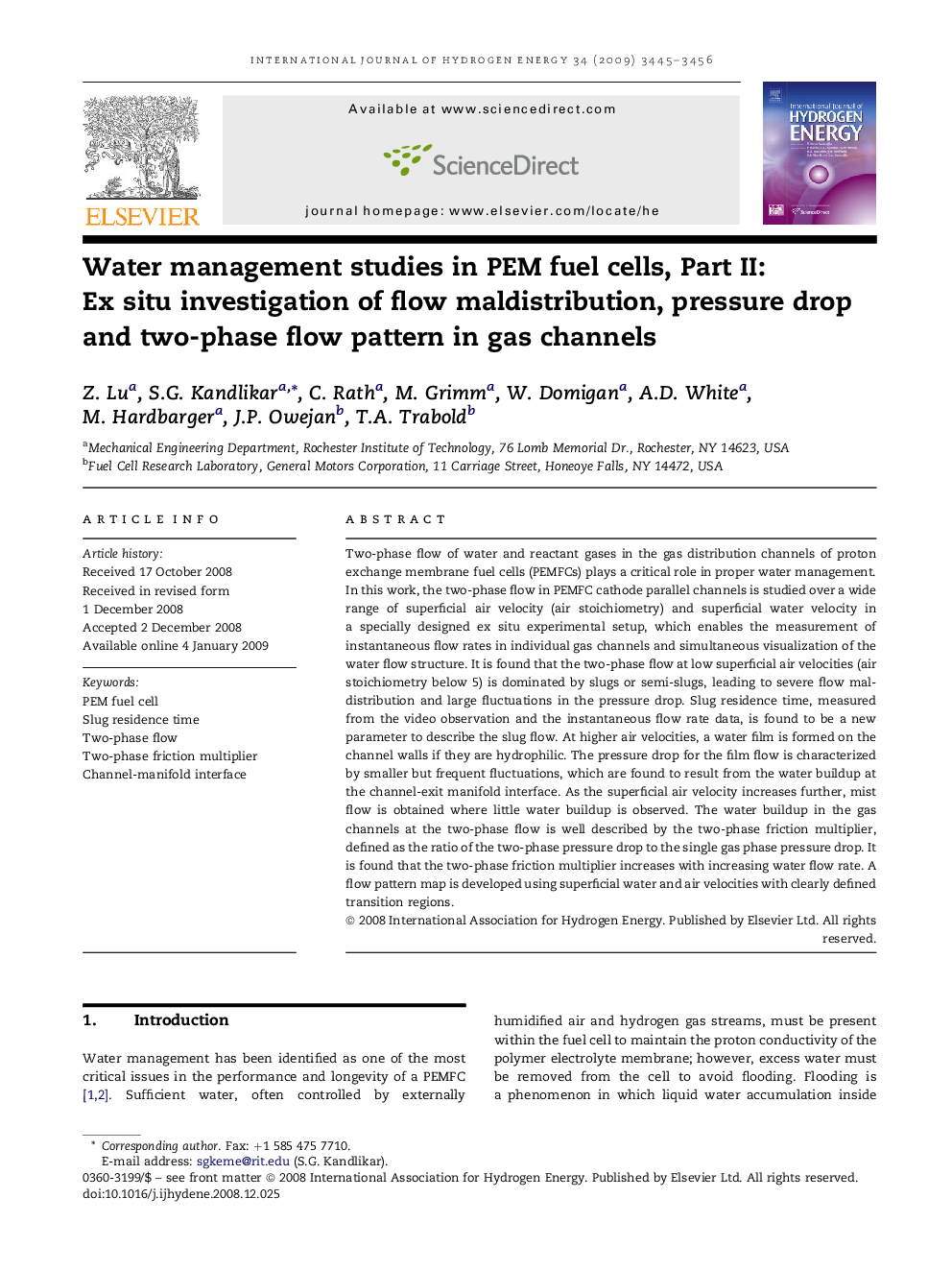| Article ID | Journal | Published Year | Pages | File Type |
|---|---|---|---|---|
| 1274046 | International Journal of Hydrogen Energy | 2009 | 12 Pages |
Two-phase flow of water and reactant gases in the gas distribution channels of proton exchange membrane fuel cells (PEMFCs) plays a critical role in proper water management. In this work, the two-phase flow in PEMFC cathode parallel channels is studied over a wide range of superficial air velocity (air stoichiometry) and superficial water velocity in a specially designed ex situ experimental setup, which enables the measurement of instantaneous flow rates in individual gas channels and simultaneous visualization of the water flow structure. It is found that the two-phase flow at low superficial air velocities (air stoichiometry below 5) is dominated by slugs or semi-slugs, leading to severe flow maldistribution and large fluctuations in the pressure drop. Slug residence time, measured from the video observation and the instantaneous flow rate data, is found to be a new parameter to describe the slug flow. At higher air velocities, a water film is formed on the channel walls if they are hydrophilic. The pressure drop for the film flow is characterized by smaller but frequent fluctuations, which are found to result from the water buildup at the channel-exit manifold interface. As the superficial air velocity increases further, mist flow is obtained where little water buildup is observed. The water buildup in the gas channels at the two-phase flow is well described by the two-phase friction multiplier, defined as the ratio of the two-phase pressure drop to the single gas phase pressure drop. It is found that the two-phase friction multiplier increases with increasing water flow rate. A flow pattern map is developed using superficial water and air velocities with clearly defined transition regions.
